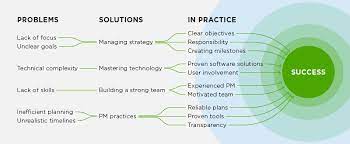Managing tasks in a dynamic environment is necessary for organizations to remain competitive and responsive to market demands in today’s fast-paced and constantly shifting business environment. Flexibility and adaptability in task management are essential for achieving productivity, meeting deadlines, and achieving success. In this blog post, we will discuss the significance of flexibility and adaptability in managing tasks in a dynamic business environment and offer strategies for overcoming the challenges that arise.
1. Flexibility and Adaptability are Required:
In a dynamic business environment, tasks are frequently subject to unforeseen alterations, shifting priorities, and evolving requirements. External factors such as market trends, customer demands, and technological advancements can have a substantial impact on the manner in which tasks must be performed. Organizations that embrace flexibility and adaptability in task management are better prepared to deal with these changes, seize opportunities, and produce results.
2. Prioritize and Reprioritize:
Agile methodologies, such as Scrum and Kanban, offer a framework for managing tasks in a dynamic environment. These methods emphasize iterative development, continuous improvement, and frequent feedback. By dividing tasks into smaller, more manageable chunks and prioritizing based on shifting circumstances, teams can rapidly adapt to shifting priorities and deliver incremental value.
3. Effective Communication and Collaboration:
In a dynamic business environment, successful task management requires effective communication and collaboration. Transparent and frequent communication keeps everyone abreast of any changes, updates, or new priorities. Regular team meetings, status updates, and project management tools facilitate real-time collaboration and guarantee that team members are aligned and working toward shared objectives.
4. Prioritization and Time Management:
Effective prioritization is necessary for task management flexibility. In a dynamic setting, tasks may need to be reprioritized based on changing deadlines, resource availability, or emerging opportunities. Assessing the urgency and significance of tasks, as well as their impact on overall objectives, enables improved decision-making and resource allocation.
5. Developing an Adaptability Culture:
Developing an adaptability culture is essential for managing tasks in a dynamic environment. Encourage employees to accept change, be receptive to new ideas, and to continually learn and improve. Providing training and development opportunities helps individuals develop resilience and equips them with the skills necessary to face unforeseen obstacles. Recognize and reward adaptability and creativity to strengthen a culture that welcomes change.
6. Agile Resource Allocation:
For managing tasks in business, resource allocation must be flexible. Assess the skill sets and availability of team members and allocate resources in accordance with the requirements of changing tasks. Cross-training team members in multiple areas ensures resource deployment flexibility, allowing for rapid adjustments and the capacity to handle unanticipated changes without interruption.
7. Continuously Monitoring and Evaluating:
In a dynamic environment, it is essential to continuously monitor and evaluate task progress. Implementing feedback loops and performance metrics enables the identification of potential problems or bottlenecks at an early stage. This enables proactive problem-solving and timely adjustments to keep tasks on track and in accordance with changing requirements.
8. Embracing Technology and Automation:
In a dynamic environment, utilizing technology and automation tools can improve task management. Project management software, collaboration platforms, and workflow automation tools facilitate real-time updates, streamline communication, and improve efficiency. Automation can facilitate the streamlining of repetitive tasks, allowing teams to concentrate on more strategic and value-added tasks.
Conclusion:
Managing tasks in a dynamic business environment requires adaptability, flexibility, and a proactive mindset. Individuals and teams can effectively navigate the challenges and seize the opportunities presented by a dynamic business environment by adopting a growth mindset, reprioritizing tasks, fostering effective communication, implementing agile project management methodologies, developing cross-functional skills, promoting collaboration, emphasizing continuous learning, and prioritizing well-being. By embracing change and being proactive in task management, businesses can thrive in the face of uncertainty and achieve long-term success.
In addition, it is essential to cultivate a culture that promotes and supports innovation. When facing new challenges or changes, embrace experimentation and encourage team members to think creatively. Encourage them to propose alternative approaches and solutions, fostering an environment in which calculated risks are embraced and failures are viewed as opportunities for learning. By fostering an innovative culture, businesses are better able to adapt to a dynamic environment and discover new avenues for success.
In addition, technology can significantly improve task management in a dynamic business setting. Utilize project management software, task tracking tools, and collaboration platforms to streamline communication, track progress, and promote openness. These digital tools allow for real-time updates, facilitate remote collaboration, and serve as a central hub for managing tasks, deadlines, and resources.
Managing tasks effectively in a dynamic business environment requires a combination of strategic thinking, effective communication, collaboration, adaptability, and an openness to change. By implementing these strategies and best practices, businesses can navigate the complexities of a dynamic environment, stay ahead of the competition, and achieve their objectives despite the constant state of change, find more here.
















Leave a Reply